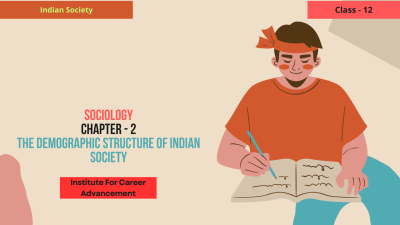Terms, concepts and their use in Sociology - Class 11
Terms, Concepts and their Use in Sociology is a fundamental chapter in Class 11 Sociology, introducing students to the key vocabulary and ideas central to the discipline. Key themes and concepts include: Sociological Terms: Definitions and explanations of core sociological terms, such as society, culture, socialization, social institutions, social stratification, and social change. Theoretical Perspectives: An overview of major sociological theories, including functionalism, conflict theory, and symbolic interactionism, and their applications in understanding social phenomena. Methods of Sociological Inquiry: The different methods used by sociologists to study society, such as surveys, interviews, observation, and experiments. Importance of Sociological Concepts: The significance of understanding sociological terms and concepts in analyzing social issues, understanding human behavior, and making informed decisions. By studying this chapter, students develop a strong foundation in sociological terminology and gain a basic understanding of the theoretical and methodological approaches used in the discipline. সমাজবিজ্ঞানে শর্তাবলী, ধারণা এবং তাদের ব্যবহার একাদশ শ্রেণির সমাজবিজ্ঞানের একটি মৌলিক অধ্যায়, যা শিক্ষার্থীদের মূল শব্দভান্ডার এবং ধারণার সাথে পরিচয় করিয়ে দেয়। মূল বিষয় এবং ধারণাগুলির মধ্যে রয়েছেঃ সমাজতাত্ত্বিক পদঃ সমাজ, সংস্কৃতি, সামাজিকীকরণ, সামাজিক প্রতিষ্ঠান, সামাজিক স্তরবিন্যাস এবং সামাজিক পরিবর্তনের মতো মূল সমাজতাত্ত্বিক পদগুলির সংজ্ঞা এবং ব্যাখ্যা। তাত্ত্বিক দৃষ্টিভঙ্গিঃ কার্যকারিতা, দ্বন্দ্ব তত্ত্ব এবং প্রতীকী মিথস্ক্রিয়াবাদ সহ প্রধান সমাজতাত্ত্বিক তত্ত্বগুলির একটি সংক্ষিপ্ত বিবরণ এবং সামাজিক ঘটনা বোঝার ক্ষেত্রে তাদের প্রয়োগ। সমাজতাত্ত্বিক তদন্তের পদ্ধতিঃ সমাজবিজ্ঞানীরা সমাজ অধ্যয়নের জন্য বিভিন্ন পদ্ধতি ব্যবহার করেন, যেমন সমীক্ষা, সাক্ষাৎকার, পর্যবেক্ষণ এবং পরীক্ষা-নিরীক্ষা। সমাজতাত্ত্বিক ধারণার গুরুত্বঃ সামাজিক সমস্যাগুলি বিশ্লেষণ, মানুষের আচরণ বোঝার এবং অবহিত সিদ্ধান্ত গ্রহণের ক্ষেত্রে সমাজতাত্ত্বিক শর্তাবলী এবং ধারণাগুলি বোঝার তাৎপর্য। এই অধ্যায়টি অধ্যয়নের মাধ্যমে শিক্ষার্থীরা সমাজতাত্ত্বিক পরিভাষায় একটি শক্তিশালী ভিত্তি গড়ে তোলে এবং শাখায় ব্যবহৃত তাত্ত্বিক ও পদ্ধতিগত পদ্ধতির মৌলিক ধারণা অর্জন করে।
English
Last updated
Wed, 27-Nov-2024



















